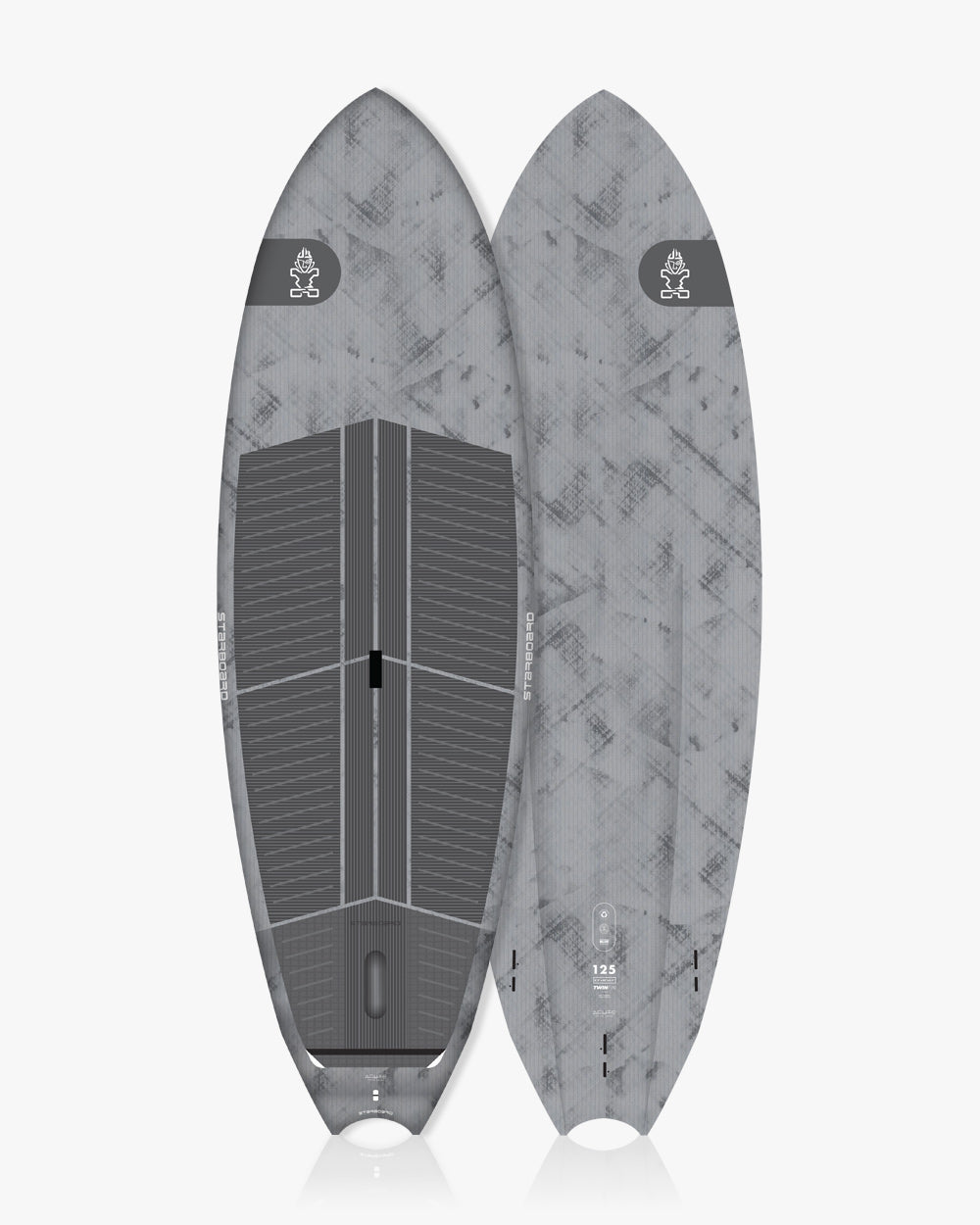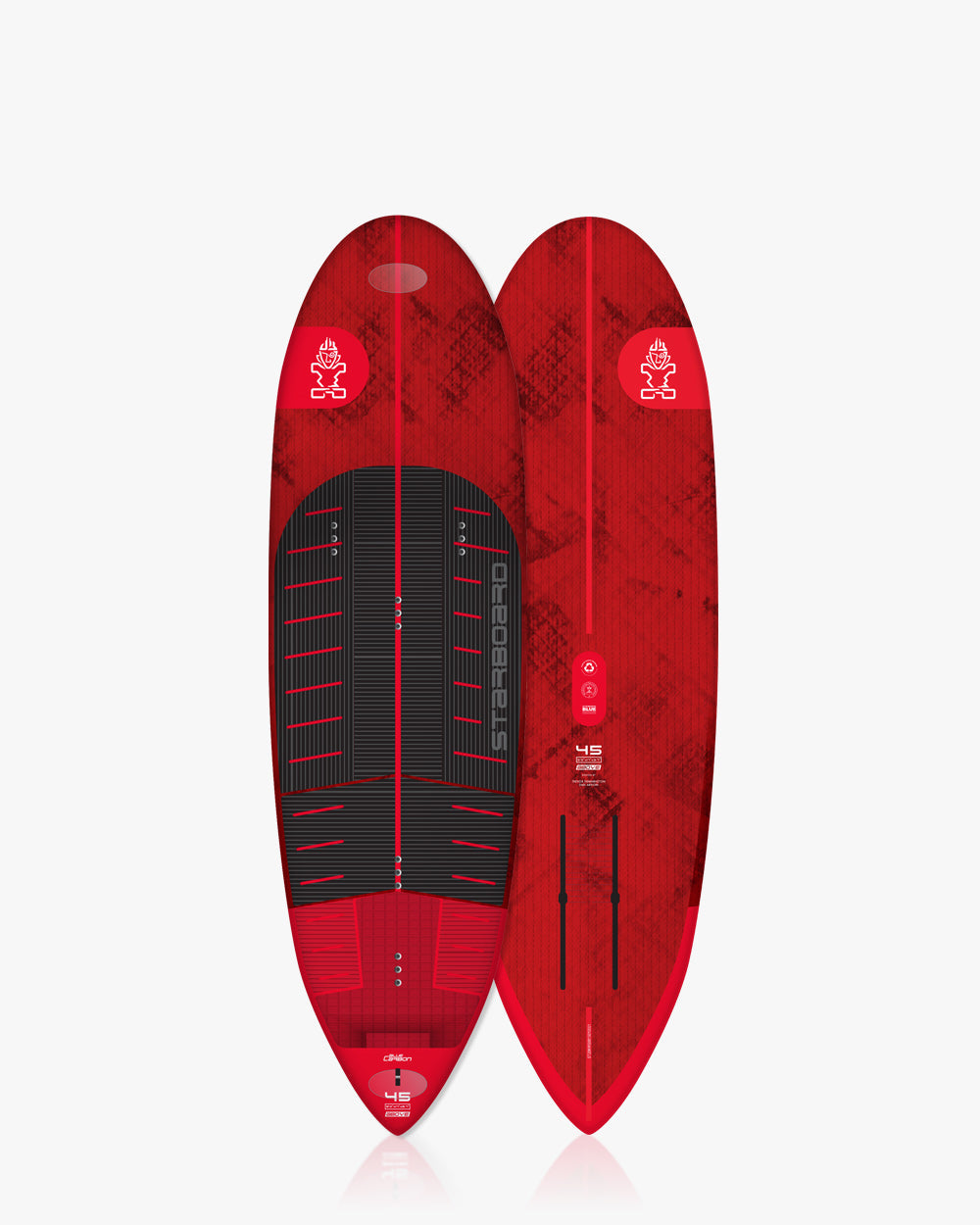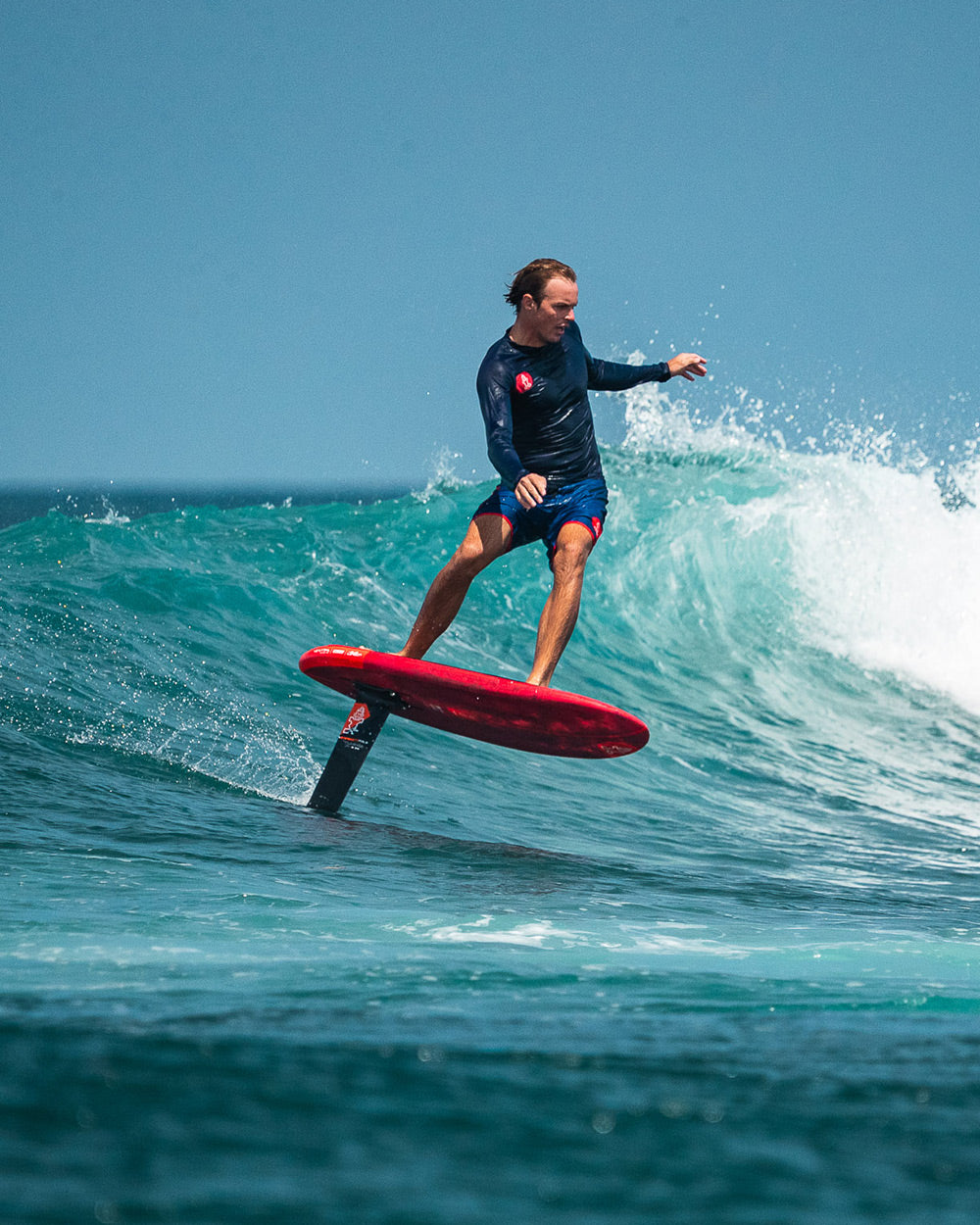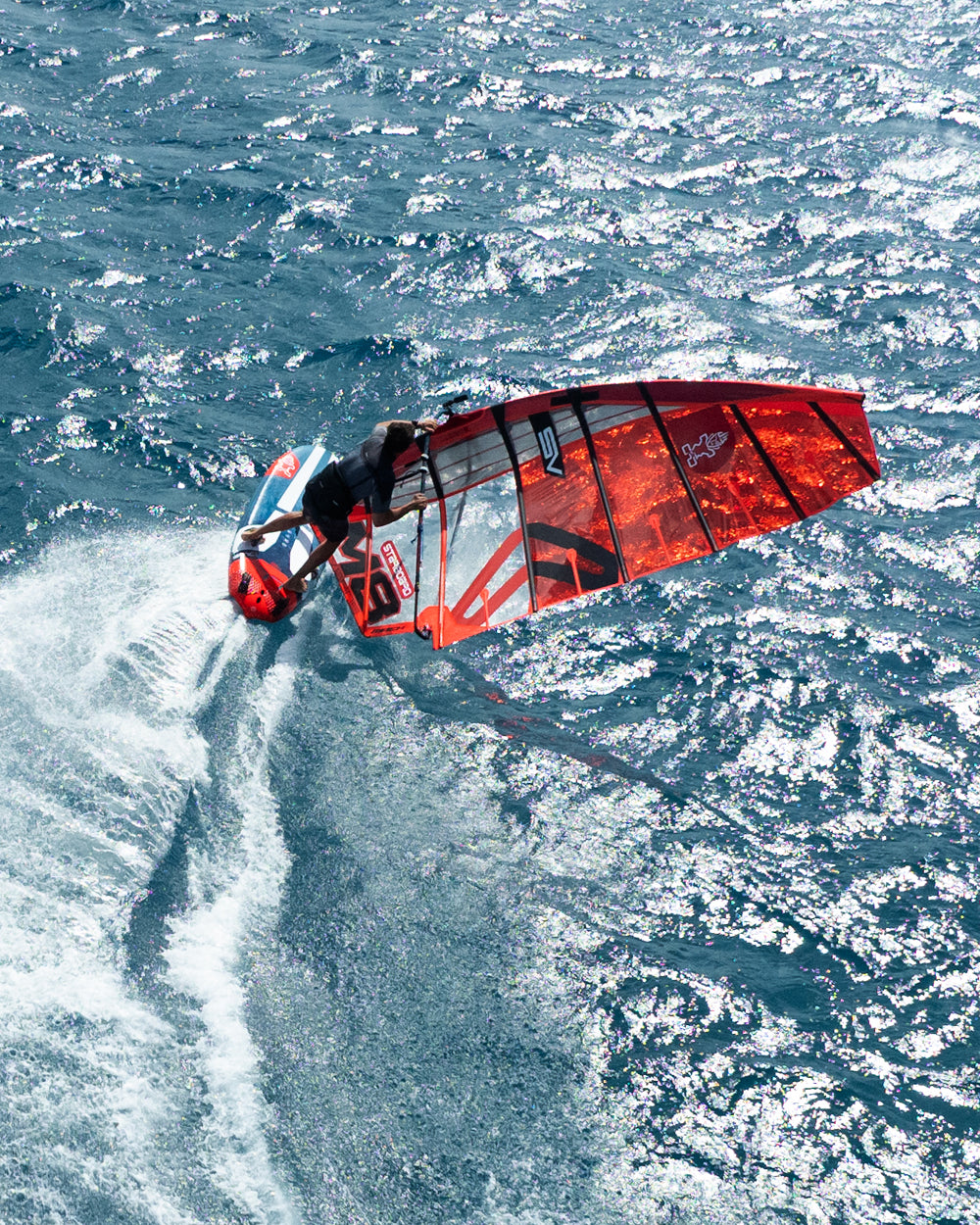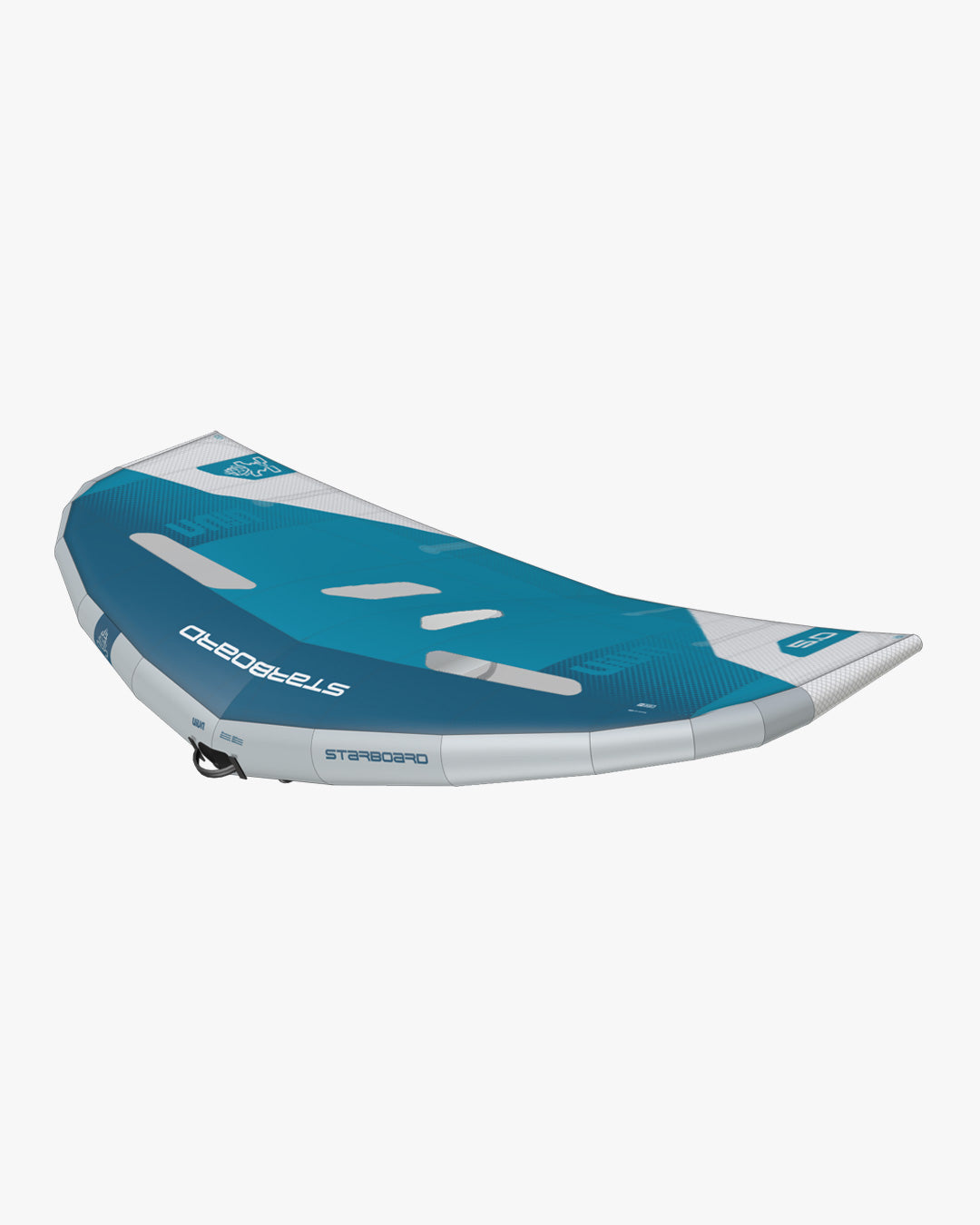A gear guide for getting started in wingboarding and progressing to more advanced wingfoiling
Are you interested in learning to wingboard? Wingboarding (synonymous with/ also known as wing foiling) is the hottest new wind sport around. This new sport combines a board and a kite-like sail that is hand-held to propel you through the water. Basic board and wind skills would benefit first-time users getting started in wing foiling, but if you’re totally new to both and still eager to learn, then there is some gear (already available on the market) that makes learning easy, fun and safe.
In the beginning, as with most sports, but wind sports in particular, learning can be taxing, but with a few tips and practice, the learning curve can be fast-tracked. It’s a great idea to get some coaching from an experienced wingboarder, but if you’re a maverick and want to go at it alone there are some online tutorials that that can get you up and flying [link]. If you are a seasoned windsurfer or kiteboarder, you could probably hustle through the first steps. If you have no wind sport skills, you should take your time before progressing to the next step.
So, you have decided that you want ti hearn how to wing but where do you start? What equipment fdo you need?
Riders looking to purchase equipment for this relatively new water sport could tend to get overwhelmed at the start with the sheer range of equipment on offer and a load of websites, each giving their own advice.
Gear for getting started in wingboarding
Starboard and FreeWing have developed equipment dedicated to getting started in wingboarding. The user-friendly designs and added features make learning easy and fun.
Starboard Wingboard 4-in-1
The state-of-the-art learning tool for wingboarding. The length provides the glide and ability to stay upwind. The thick rails, concave bottom and overall volume make it super stable. Footstrap inserts are placed perfectly for the first wing classes, helping to find the right foot positioning.
The center Tuttle Box, situated in the middle of the board, helps prevent drifting downwind when windsurfing and wing-boarding. It gives you the traction you need to glide forwards when powered. Besides balance, this is one of the more challenging aspects new wing boarders need to overcome so this feature is super critical and makes getting started much easier.
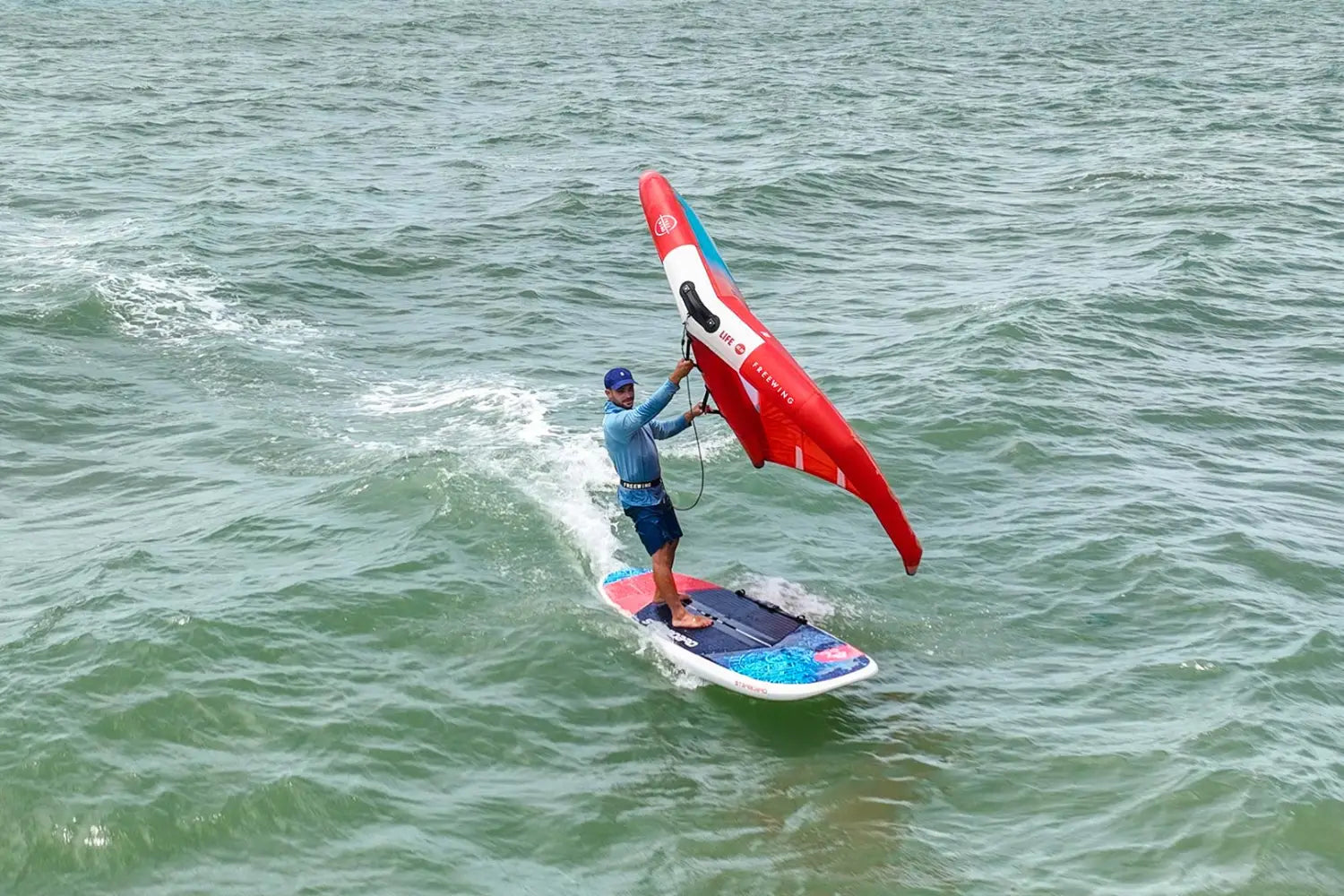
FreeWing Life
This is an industry first wing developed for beginner wingboarders and those new to wind sports. It’s a forgiving and easy to use wing, featuring excellent light wind power as most beginners will start in low wind conditions, but still has top end stability once you get going thanks to the rigid airframe structure.
Featuring the new Code-Tec 95 canopy material developed from a high modulus, high tenacity fabric, the Life is a compact wing with short, tucked wingtips, perfect for getting started on fins, accelerating getting going on foil and freeride progression. The short wingtips also enhance the ease of use on snow or with skateboards and land boards. Comes standard with a pistol grip aluminium boom, and an option to switch to handles. The wing also features large horizontal and vertical windows for safety, approved for low-temperature use.
Gear for progressing to wing foiling
Once you’ve learned to handle the wing and board on the water, then it’s time to progress to the foil (or perhaps you want to jump straight into it?).
Beginner wing foilers should choose buoyant and stable boards as you want to be able to stand on the board and float. The rule of thumb for choosing the right size board for a beginner is 30-40 litres of volume over your body weight, i.e. 80 kgs = 120 litre board.
As you progress from a beginner to an intermediate, you will be able to move to a smaller and more maneuverable board, but during the first lessons, you want to make the most of your learning time by using a more stable board.
Wing sizes range from 2.5 to 7.5 meters. As a beginner, it is easier to get started with a bigger wing. A bigger wing will give you more wind power.
A good starting wing would be a five-meter wing for anyone up to 70 kilograms and a six-meter wing for anyone over that weight. Note; wind must also be taken into account.
Starboard Wingboard Foil
This is a dedicated wing foil board range designed for maximum performance in a small size while catering to all skill levels, from beginner to expert riders. The key to a great foil board is creating a balance between stability and volume. The Wingboard Foil puts volume in the rails, nose and at the square tail. Stability is also created by having the feet as close to the foil as possible, so the thinner a board is, the better it rides.
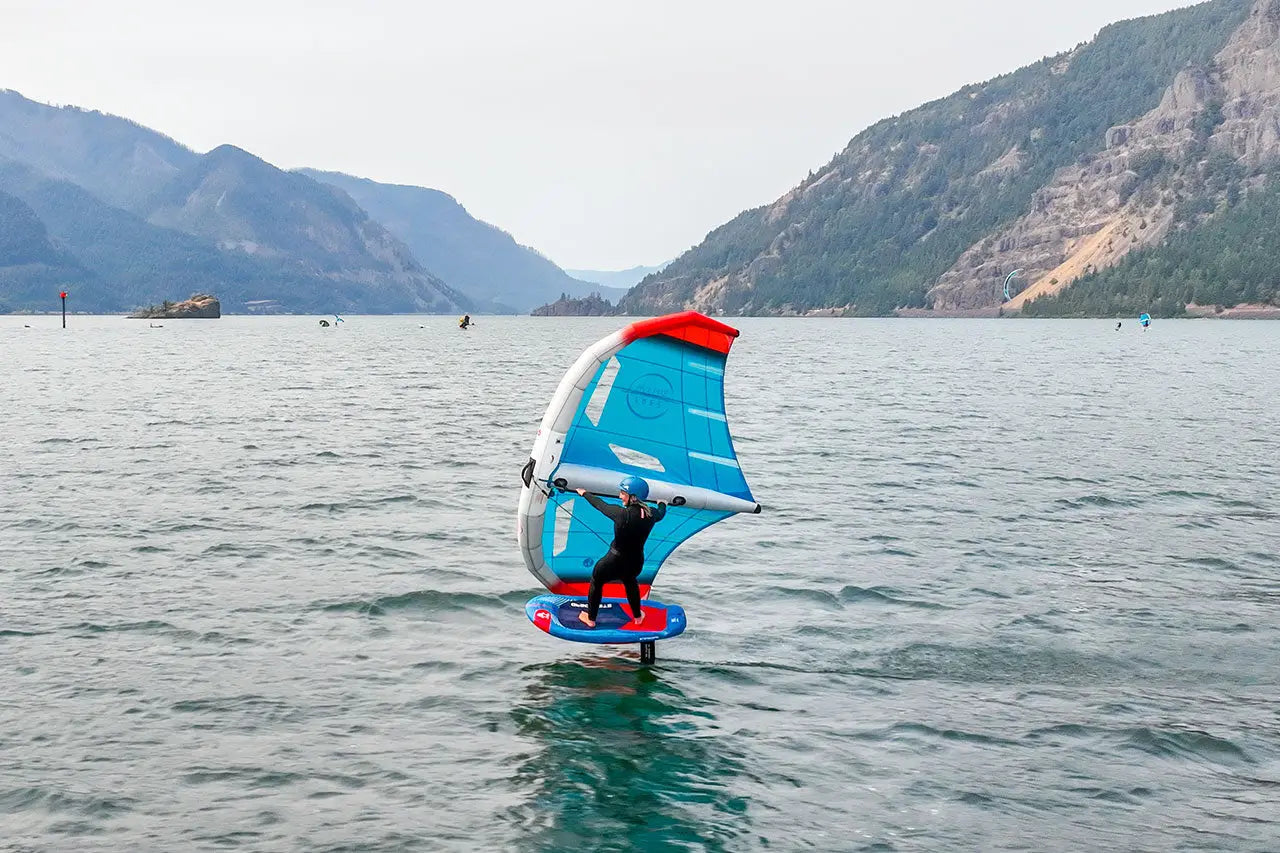
FreeWing AIR
The FreeWing AIR is designed for wing foil beginners to down-the-line wing surfers. This is an all-around wing focused on ease of use. The firm canopy tension generates instant power while the extra stiff airframe offers riders control and stability. The Modular Handle System, a first of it’s kind, allows switching between the innovative Firm-Flex Grip Handle and the Carbon Pre-preg Handle for personalisation of the wing experience.
Starboard Foils
For beginners, we recommend starting with a “Low Aspect Ratio” foil. “Low Aspect” means the front wing is less wide relative to its length (more spade-shaped), rather than wide and short (this is called “High Aspect”, like the wings of a plane or glider). Lower aspect front wings have the advantage of delivering more predictable lift as they speed up, making them easier to progress on. Using a front wing with a lot of surface area (2000cm2 or more) will ensure that you can keep flying the foil at low speeds, making it easier to get your first flights with less precise technique. These lower aspect foils also improves your success rate when beginning to practice transitions, as they are more forgiving.
Wingboarding Safety
Don’t wingboard/ wingfoil in offshore wind conditions.
Check the weather forecasts as wind can drop and leave you stranded out in the middle of the ocean.
If possible, go wingboarding with a buddy, otherwise let someone know when you go out for a session and expect to be back.
Always wear 2 leashes – an ankle or calf leash keeps you connected to your board, while a waist leash (available with the GO model) or wrist leash (available with AIR model) keeps the wing from blowing away from you in the inevitable event of a wipeout.
















